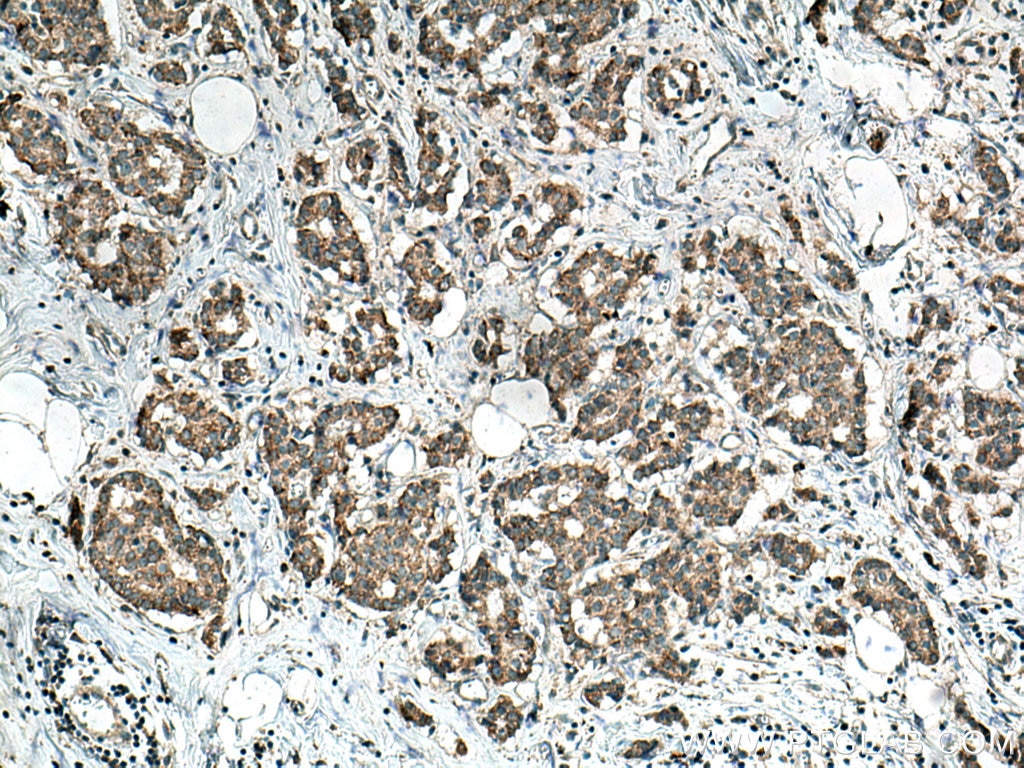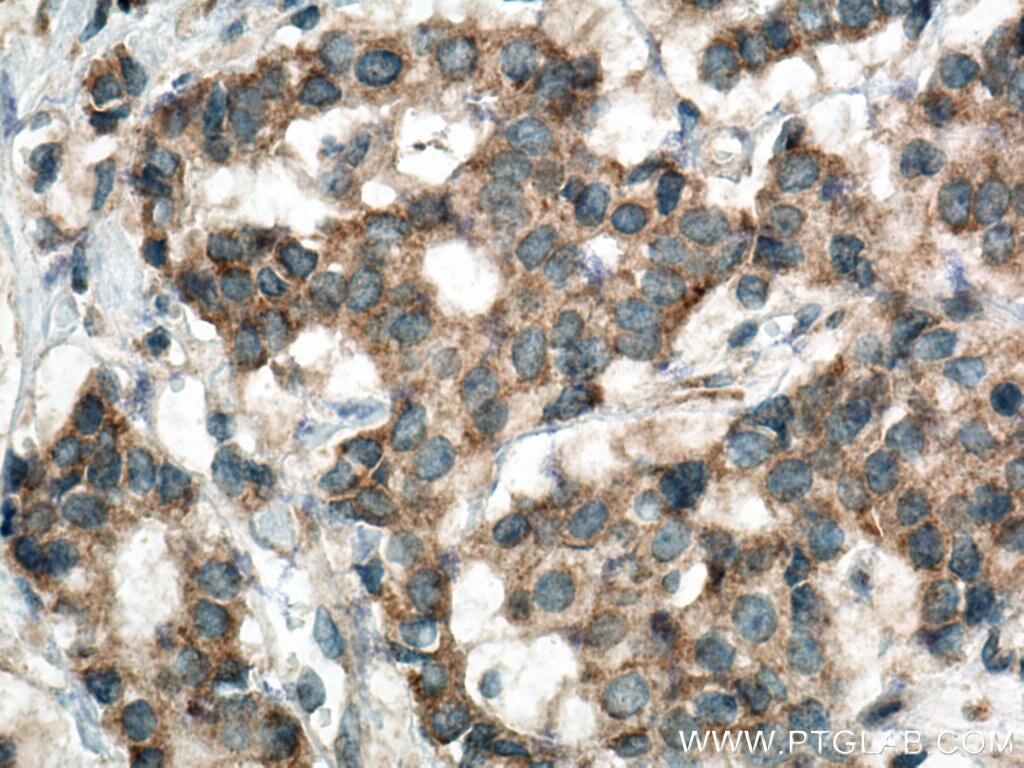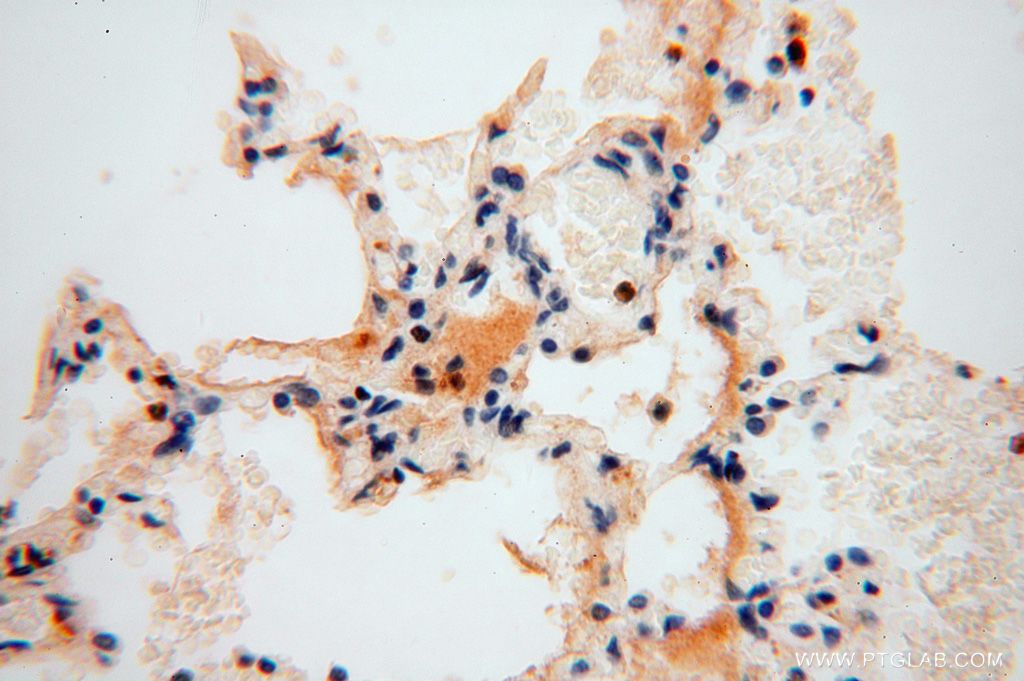Validation Data Gallery
Tested Applications
| Positive WB detected in | HEK-293 cells, fetal human brain tissue |
| Positive IHC detected in | human breast cancer tissue, human kidney tissue, human lung tissue Note: suggested antigen retrieval with TE buffer pH 9.0; (*) Alternatively, antigen retrieval may be performed with citrate buffer pH 6.0 |
Recommended dilution
| Application | Dilution |
|---|---|
| Western Blot (WB) | WB : 1:1000-1:5000 |
| Immunohistochemistry (IHC) | IHC : 1:250-1:1000 |
| It is recommended that this reagent should be titrated in each testing system to obtain optimal results. | |
| Sample-dependent, Check data in validation data gallery. | |
Published Applications
| WB | See 2 publications below |
Product Information
16988-1-AP targets HSDL1 in WB, IHC, ELISA applications and shows reactivity with human, mouse, rat samples.
| Tested Reactivity | human, mouse, rat |
| Cited Reactivity | human |
| Host / Isotype | Rabbit / IgG |
| Class | Polyclonal |
| Type | Antibody |
| Immunogen |
CatNo: Ag10588 Product name: Recombinant human HSDL1 protein Source: e coli.-derived, PGEX-4T Tag: GST Domain: 1-330 aa of BC018084 Sequence: MAAVDSFYLLYREIARSCNCYMEALALVGAWYTARKSITVICDFYSLIRLHFIPRLGSRADLIKQYGRWAVVSGATDGIGKAYAEELASRGLNIILISRNEEKLQVVAKDIADTYKVETDIIVADFSSGREIYLPIREALKDKDVGILVNNVGVFYPYPQYFTQLSEDKLWDIINVNIAAASLMVHVVLPGMVERKKGAIVTISSGSCCKPTPQLAAFSASKAYLDHFSRALQYEYASKGIFVQSLIPFYVAASMTAPSNFLHRCSWLVPSPKVYAHHAVSTLGISKRTTGYWSHSIQFLFAQYMPEWLWVWGANILNRSLRKEALSCTA 相同性解析による交差性が予測される生物種 |
| Full Name | hydroxysteroid dehydrogenase like 1 |
| Calculated molecular weight | 330 aa, 37 kDa |
| Observed molecular weight | 37-40 kDa |
| GenBank accession number | BC018084 |
| Gene Symbol | HSDL1 |
| Gene ID (NCBI) | 83693 |
| RRID | AB_2120235 |
| Conjugate | Unconjugated |
| Form | |
| Form | Liquid |
| Purification Method | Antigen affinity purification |
| UNIPROT ID | Q3SXM5 |
| Storage Buffer | PBS with 0.02% sodium azide and 50% glycerol{{ptg:BufferTemp}}7.3 |
| Storage Conditions | Store at -20°C. Stable for one year after shipment. Aliquoting is unnecessary for -20oC storage. |
Protocols
| Product Specific Protocols | |
|---|---|
| IHC protocol for HSDL1 antibody 16988-1-AP | Download protocol |
| WB protocol for HSDL1 antibody 16988-1-AP | Download protocol |
| Standard Protocols | |
|---|---|
| Click here to view our Standard Protocols |
Publications
| Species | Application | Title |
|---|---|---|
Adv Sci (Weinh) Meisoindigo Acts as a Molecular Glue to Target PKMYT1 for Degradation in Chronic Myeloid Leukemia Therapy | ||
Sci Adv Global ubiquitylation analysis of mitochondria in primary neurons identifies endogenous Parkin targets following activation of PINK1. |









